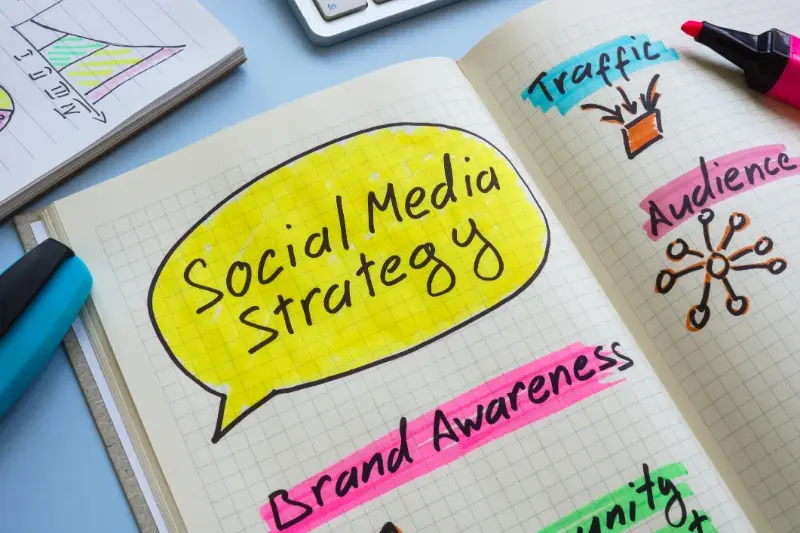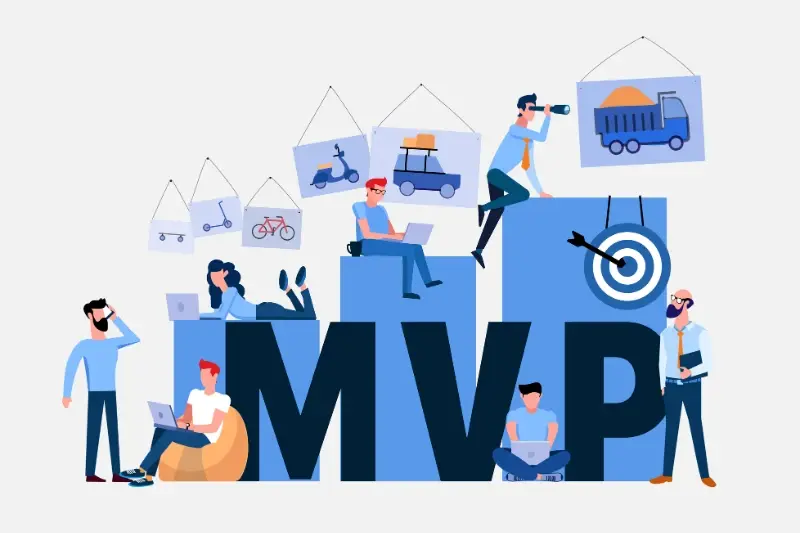Dating App Success Stories: What We Can Learn From the Apps That Made It
Building a dating app feels like the perfect business idea, doesn't it? People are always looking for love, smartphones are everywhere, and success stories like Tinder and Bumble make it look straightforward. But here's the reality—most dating apps fail spectacularly. They burn through investment money, struggle to attract users, and disappear without anyone really noticing they existed in the first place.
After working with dozens of app founders over the years, I've watched brilliant developers and smart business minds make the same mistakes repeatedly. They focus on features nobody wants, ignore the psychology of how people actually date, or simply copy what's already out there without understanding why it works. The dating app graveyard is massive—filled with apps that had decent funding, solid technical teams, and genuine intentions but still couldn't make it work.
The difference between dating apps that succeed and those that fail isn't usually about the technology—it's about understanding human behaviour and building trust
That's exactly why we need to examine the success stories and case studies from apps that actually made it. What did they do differently? How did they solve problems that others couldn't? And most importantly, what can we learn from their journey to apply to future projects? The answers might surprise you—and they definitely don't involve revolutionary technology or unlimited budgets.
The Power of Simple Ideas: How Basic Concepts Became Billion-Dollar Apps
Some of the most successful dating apps started with ridiculously simple ideas. Tinder's swipe-right mechanism wasn't groundbreaking technology—it was just a clever way to make saying "yes" or "no" to someone feel natural. Before Tinder, online dating felt like filling out job applications; afterwards, it felt like a game.
The beauty of these billion-dollar concepts lies in their simplicity. Bumble took Tinder's swipe and added one twist: women message first. That's it. One small change that addressed a massive problem in online dating. Hinge went even simpler—they focused on starting conversations through specific prompts rather than generic "hey" messages.
What Made These Simple Ideas Work
- They solved real problems that people actually had
- Anyone could understand how to use them within seconds
- They didn't try to revolutionise everything at once
- They made dating feel less intimidating and more fun
- Each app focused on doing one thing really well
The lesson here isn't that simple ideas automatically become successful—it's that successful apps often start with simple solutions to complex human problems. Dating is complicated, but choosing whether you fancy someone doesn't have to be. Sometimes the best app ideas are the ones that make people think "why didn't I think of that?"
Learning from Mistakes: What Failed Dating Apps Teach Us About User Behaviour
Failure teaches us more than success ever could—and the dating app graveyard is full of expensive lessons. I've watched countless apps launch with huge budgets and celebrity endorsements, only to disappear within months. The reasons are always fascinating and tell us so much about what users actually want.
Google+ tried to muscle into social dating but completely misunderstood that people want dedicated spaces for romance, not everything mixed together. Then there was Lulu, which let women rate men like restaurants—turns out people don't appreciate being scored on their dating performance! These failures show us that users value respect and authenticity above flashy features.
Common Patterns in Dating App Failures
- Overcomplicating the matching process with too many steps
- Ignoring safety concerns, particularly for women users
- Focusing on gimmicks rather than genuine connections
- Poor moderation leading to fake profiles and spam
- Trying to be everything to everyone instead of serving a specific audience
The most successful apps learn from these mistakes. They keep things simple, prioritise user safety, and understand that dating apps succeed when people actually meet in real life and delete the app. That's the ultimate success metric—not engagement time!
Study failed competitors before building your dating app. Their user reviews often reveal exactly what features to avoid and what problems still need solving.
The Algorithm Behind the Magic: How Smart Matching Changed Everything
When dating apps first appeared, they were pretty basic—you'd scroll through profiles and pick who you liked based on photos and a few details. But then something clever happened. The most successful dating apps realised they could use maths to help people find better matches.
Take eharmony, for example. They built their entire business around a compatibility quiz that asks hundreds of questions about your personality, values, and what you're looking for. Their algorithm then matches you with people who complement your answers. It sounds simple, but the maths behind it is quite sophisticated.
What Makes a Good Matching Algorithm
The best matching systems don't just look at what people say they want—they watch what people actually do. If someone says they want a partner who loves hiking but keeps swiping right on people who prefer staying indoors, the algorithm learns from that behaviour.
- User behaviour tracking (who they actually message vs who they skip)
- Success rate monitoring (which matches lead to actual conversations)
- Preference learning (adjusting recommendations based on patterns)
- Timing optimisation (showing profiles when users are most likely to engage)
The really smart apps also consider practical things like location, age preferences, and even the time of day you're most active. They're constantly learning and adjusting to improve your experience—and keep you coming back for more.
Building Trust in a Digital World: Safety Features That Actually Work
Trust is everything when you're asking people to meet strangers from the internet. I've worked on dating apps where safety was treated as an afterthought—and trust me, users can tell. The apps that really made it big understood that without trust, you don't have a business at all.
Bumble changed the game by letting women make the first move, which sounds simple but was actually genius. It gave users more control over their experience, and control breeds confidence. Then you've got verification systems that actually work—not just some tick box that anyone can fake, but proper photo verification that matches your selfie to your profile pics.
Learning From Real Success Stories
The best case studies show that safety features need to be built into the core experience, not bolted on later. Block and report buttons are table stakes now; what matters is having real humans reviewing reports quickly and taking action.
We found that users who felt safe were 300% more likely to go on actual dates and recommend the app to friends
Location sharing with trusted contacts became standard after apps realised people were screenshotting profiles and texting them to mates anyway. Smart apps made this easier and safer. The lesson? Don't fight user behaviour—build features that make it better.
Growing Beyond Downloads: How Successful Apps Keep Users Coming Back
Getting people to download your dating app is just the beginning—keeping them engaged is where the real challenge starts. I've worked with dating apps that had brilliant launches but struggled to maintain active users beyond the first week. The apps that survive and thrive are those that understand retention isn't about luck; it's about strategy.
Successful dating apps use a combination of smart psychology and practical features to keep users returning. They send notifications at just the right moments—not too many to annoy, but enough to remind users why they downloaded the app in the first place. Push notifications about new matches or messages work well, but the timing matters enormously.
Key Retention Strategies That Work
- Daily login rewards or premium features for active users
- Personalised match suggestions that improve over time
- Social features like community events or group activities
- Progress tracking that shows users their dating journey
- Regular app updates with new features and improvements
The most successful apps I've seen also focus heavily on the user experience after matching. They don't just throw two people together and hope for the best—they provide conversation starters, suggest meeting places, and even offer dating advice. This approach transforms the app from a simple matching tool into a comprehensive dating companion that users genuinely value.
The Business Side of Love: Revenue Models That Actually Work
Making money from dating apps isn't rocket science, but it does require getting the balance right. Push too hard and you'll drive users away—don't push hard enough and you won't have a business. The most successful dating apps have cracked this code by offering genuine value at every price point.
The freemium model dominates this space for good reason. Users can download, create profiles, and start matching without paying a penny. This removes the barrier to entry and lets people test the waters. Once they're hooked (and they will be if your app works properly), they'll happily pay for premium features that actually improve their experience.
Premium Features That Users Actually Want
The best-performing premium features solve real problems. Unlimited swipes, advanced filters, and the ability to see who's liked you first—these aren't gimmicks. They're genuine improvements that make finding matches easier and faster.
Subscription vs One-Off Payments
Subscriptions win every time in dating apps. Monthly and yearly plans create predictable revenue streams whilst keeping users engaged long-term. Some apps also offer virtual gifts and boosts as one-off purchases, but these work best as supplements to the main subscription model.
Start with a generous free tier that actually works, then make premium features feel like natural upgrades rather than paywalls.
Global Expansion Done Right: Taking Dating Apps Worldwide
Taking a dating app global isn't just about translating text into different languages—though that's part of it. The most successful dating apps understand that romance works differently around the world, and what makes hearts flutter in London might fall completely flat in Tokyo.
Tinder's global rollout is a masterclass in smart expansion. They didn't try to launch everywhere at once. Instead, they picked key markets and really understood the local dating culture before moving in. In some countries, people are more conservative about showing photos; in others, family approval matters more than individual choice. These aren't small details you can ignore.
What Makes Global Expansion Work
- Research local dating customs and cultural norms
- Partner with local influencers and universities
- Adapt features for different relationship expectations
- Consider local payment methods and pricing
- Build region-specific safety features
- Test marketing messages with native speakers
The apps that fail internationally usually make the same mistake—they assume their home market success will translate directly. It won't. Dating is deeply cultural, and successful global dating apps respect that while keeping their core experience intact.
Conclusion
After spending years working with dating app clients and studying the success stories that shaped this industry, I can tell you that the patterns are pretty clear. The apps that made it big didn't succeed because they had the fanciest features or the biggest marketing budgets—they succeeded because they understood what people actually wanted and then delivered it consistently.
What strikes me most about these case studies is how the winning apps focused on solving real problems rather than creating flashy gimmicks. Tinder simplified the overwhelming choice paralysis of online dating; Bumble gave women control over their conversations; Hinge moved away from the hookup culture towards meaningful connections. Each one identified a genuine pain point and built their entire experience around fixing it.
The revenue models that work aren't the ones that milk users for every penny but the ones that add genuine value. Premium features that people actually want to pay for; safety tools that make the experience better for everyone; matching algorithms that get smarter over time. These success stories show us that sustainable growth comes from keeping users happy, not just keeping them hooked.
If you're thinking about entering this space, study these wins and losses carefully. The dating app market is crowded, but there's always room for apps that truly understand their users and deliver something meaningful.
Share this
Subscribe To Our Blog
You May Also Like
These Related Stories

Beyond Tinder: How To Build A Dating App That Stands Out In 2025

From Zero to Viral: How These Apps Won Social Media





